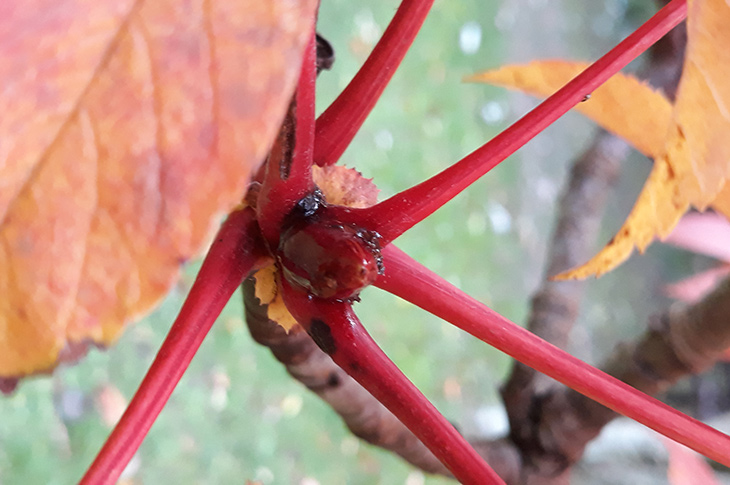Early winter is setting in now in the gardens. In spite of all the rain our beech trees are on fire now in a last blaze of orange autumn colour. The Gingko Biloba too is a shining beacon of fine butter yellow. As the green pigment breaks down in the cool and dark of the season, the beautiful autumn colour reveals itself.

Photos: Gingko biloba (left) and Snake Bark Maple, Acer capillipes (right)
There is a slight tension between leaving the leaves for visitors to collect and scuff through as they marvel at their colours, and the professional gardener who knows the damage that rotting leaves can cause to our grass. That said we can only just keep up with the fall so there are plenty to go round.
We have been making some great leaf mould from previous years’ leaf and together with garden compost we use this to condition our soil. High up on the chalk hill at Highdown the soil can be described as thin or very thin and is thirsty for the addition of organic matter.
It is easy to make leaf mould at home and just keep it bagged or covered to retain moisture … and to get the very best, leave it for two years.
The garden borders and shrubbery are also revealing themselves in their winter mode and, unlike us layering up with extra clothes, they divest themselves of their summer attire and sit naked until spring.
Entire borders and areas of the garden are now see through, the woody forms of trees and shrubs laid bare to reveal form and detailed tracery of branch and twig.

Photo: orbus sargentiana
Winter tree identification without leaf or flower to guide you is quite an art and we have been honing ours and our apprentice’s eye for the detail of winter buds and bark.
We are lucky to have some garden plans to help us at Highdown, but as we refine these and delve down into historic records we are often coming up with surprises such as a Paper Mulberry (Bousonetia papyrifera) with its very variable foliage masquerading as a Black Mulberry (Morus nigra).
As the garden sinks into the deep dormancy of winter even now there are signs of new growth and a spring to come. As we winterise our shrub beds and do a final weed and mulch down, the bulbs just below are poised ready for their spring display.
The earliest in the garden is a November Snowdrop (Galanthus nivalis reginaeolgae) blooming away with its elegant flowers hanging on little fishing rod stems on our rockery; it just can’t wait for the New Year.

Photos: Galanthus reginaeolgae